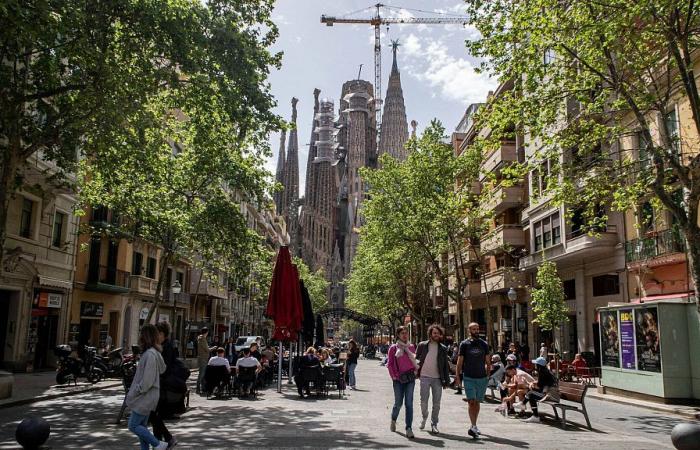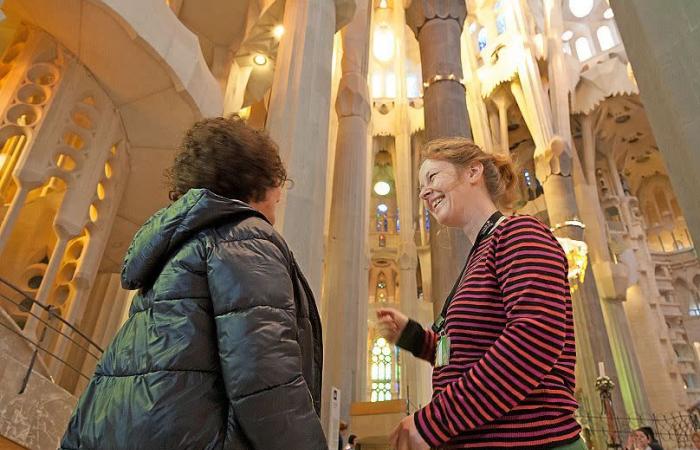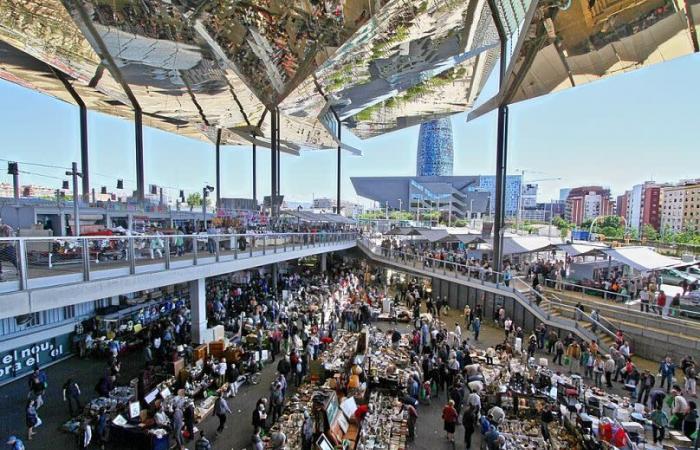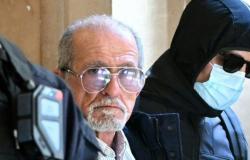Before going to Barcelona in March, I read the big titles with a mixture of skepticism and worry. This is what was written:
“Tourists sprinkled with water pistols. Residents cry:” Tourists go home! Other demonstrations are planned. “
They have brushed the painting of a people who is tired of the back and forth economy. And there was no way to escape it: my presence could contribute to the problem. I was traveling to run the city’s marathon – one of its biggest international events – and I was wondering if I hadn’t chosen the bad time.
As is often the case, reality is more nuanced.
Big events report a lot of money, but they also attract a lot of people
International marathons are a big deal. According to its main sponsor, Bank of America, the Chicago 2022 marathon generated around 340 million euros, created nearly 3,000 jobs and injected 145 million euros into the local economy.
The Barcelona marathon is not entirely on this scale, but 27,000 people registered in the March race, 7,000 more than ever.
It is roughly the number of cruise boats that nine ships would transport to full capacity, all descended in the city for a morning of hard work and a night of Cava and festive vermút.
Would the city oppose a new influx of visitors wishing to get lost in the Gothic district, to marvel at the masterpieces of Gaudí and to feast in the middle of the mercenaries?
No way. I was not greeted by water pistols – even if they would have been welcome in certain places in the 42 -kilometer route – but by cries of encouragement.
Thousands of inhabitants bordered the streets. The energy was electric. The city felt proud.
None of this was a surprise. Marathons have not yet become targets for anti-tourism demonstrators, even if the “Running Holidays“Multiply.
However, the tension is real and the consequences of overcrowding are not difficult to detect.
Why some residents reach their limits
Barcelona is one of the most visited cities in Europe. More than 12 million people go there each year, and about five million of them make a detour to Güell Park and the Sagrada Família. The pressure exerted on these places – and on people who live nearby – is immense.
However, tourism represents more than 125,000 jobs and almost 15 % of the city’s economy.
For many inhabitants, this is notProhibit tourists. It’s about finding a lasting balance.
“Barcelona is a much quieter, safer and more welcoming city than what we say, but we sometimes pay more attention to isolated events that make a lot of noise “explains Jordi Luque Sanz, native of Barcelona Gastronomic writer and main culinary attaché at Bon vivant Communications, a company that manages high -end chefs and restaurants around the world.
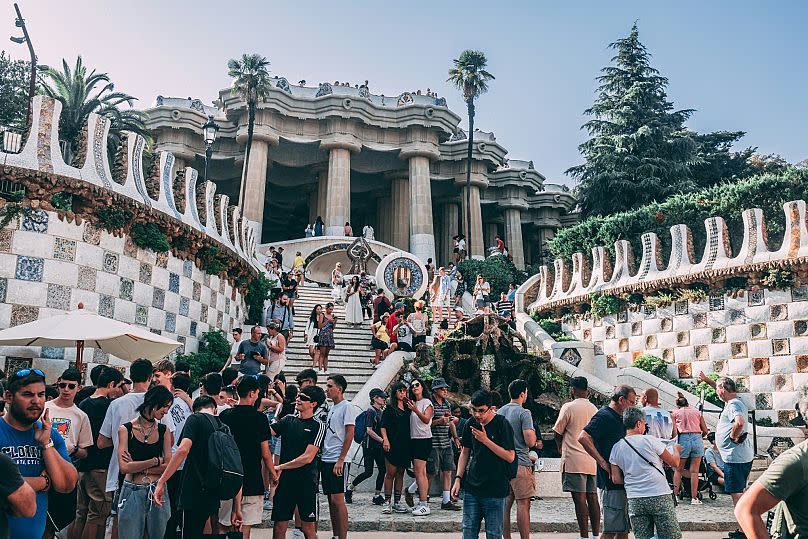

“That said, I will not deny that tourism has developed enormously in recent years, that we lack an adequate model because no government has been interested in developing one seriously and that certain areas are very overcrowded.”
During my trip, reference destinations like Rambla and Sagrada Família were crowded, despite gray, rainy and unpredictable weather. In a restaurant, I saw a server – with the patience of a saint – repeating customers who had ignored the panel several times “Reservations only” And who had burst out to ask for a table, still in English.
At Park Güell, disoriented visitors, ignoring that they had to reserve their online tickets, met exasperated employees. I heard a staff member exclaim in front of a couple of Hispanophones:
“What a miracle to hear people talking Spanish in this place! “
Cruise boats and short -term rentals are subject to a meticulous examination
Tensions come largely from the way people visit the city.
Short -term rentals and cruising tourism are the main stumbling blocks. Many apartments have been transformed into Airbnbswhich had the effect of ousting the inhabitants of the city and transforming formerly quiet streets into celebration areas.
Here there is no “suburb“Explains Ann-Marie Dunnigan, Irish expatriate and co-founder of Runner Bean Tours, who has lived in Barcelona for almost 20 years.” Some people do not know much about life in neighborhood or in apartment. It took me years to get used to it. “
She says that many tourists often settle on balconies or terraces, drink and chat long after midnight – a taboo in Barcelona communities.
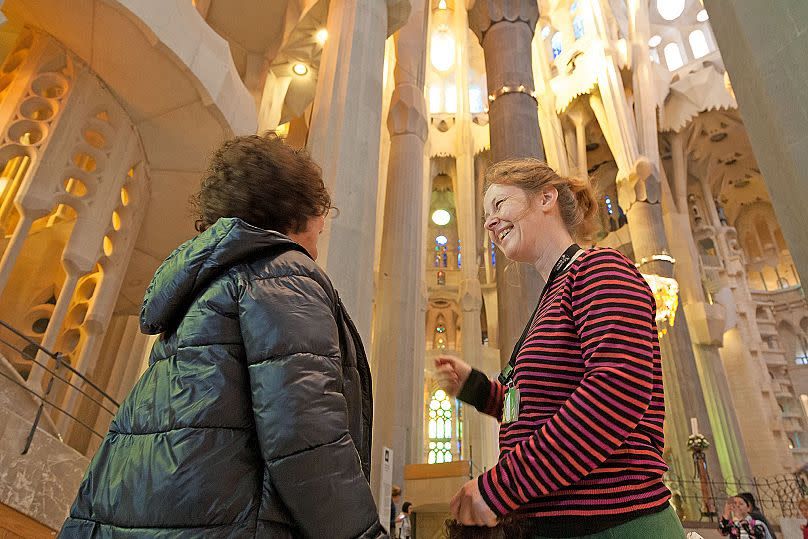

“If you want to have fun and party, go out in areas where there are clubs “, she advises.
Meanwhile, cruising boats unload thousands of tourists for a day that rarely remain long enough to contribute significantly to the local economy.
Last May, the mayor of Barcelona, Jaume Collboni, warned that the volume of short -lived travelers overwhelmed the popular areas and crowded public transport. “”We reach a limit and we have to cap the number of visitors for a day “.
The cultural assessment is just as worrying.
Long -time residents are attending the transformation of their city: bars, restaurants and historic neighborhood markets change their names to adapt to the tastes of passing clientele, and chick shops are now occupying the historic buildings of El Born and the Gothic district.
What travelers can do differently
However, beyond large attractions, there is a less saturated and more rewarding Barcelona.
Sant Pau’s Modernista recreation offers a remarkable overview of the Barcelona modernist movement with a fraction of the crowd of the Sagrada Família, just at the bottom of the street.
Small cafes like Dalston and SIP associate locally roasted coffee grains with a friendly service.
Less frequented places like history San Antonio market and the Quimtet & Quimtetthe favorite of pintxos (standing tables only) are antidotes in overcrowded places.
This is the kind of experiences that experts like Jordi Luque advise to search.
“The big monuments – the Sagrada Família, the Casa Batlló, the Picasso museum – are fabulous, but it is worth trying to know other places, such as the districts of Poble Nou or Sants, where everything is much more real“He explains.
Jordi Luque recommends local markets such as Mercat del Ninot and Mercat de Galvany rather than Boqueria, which is crowded, and encourages travelers to explore the quieter corners of the Eixample, “Not just the long and around the Paseo de Gracia, which is a wonderful but too crowded street“.
Ann -Marie Dunnigan suggests places like Montjuïc and Glòries if you want to discover more local – and unknown – aspects of the city. “The Montjuïc cemetery is absolutely magnificent and no one goes there,” she said, emphasizing the Mausoleums of Art Nouveau style built by the bourgeois of the city for their loved ones at the turn of the 20th century.
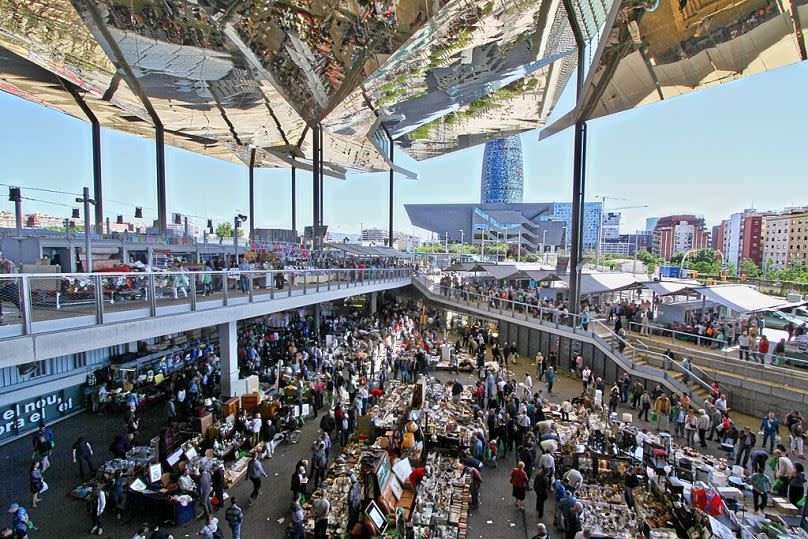

She adds, offers a window on the modern architecture of the city, especially on sites such as the excellent design museum in Barcelona and the inking market.
She also encourages visitors to go to community festivals rather than major festivals as The mercy.
“Each district organizes two per year, with food and sardanas (traditional musical dances)“Explains Ann-Marie Dunnigan.”They will give you a much more local impression. “
It is also useful to know – and respect – the local label. Jordi Luque has some suggestions to make.
Don’t walk a shirtless, he said. Avoid rummage in residential neighborhoods. Drink in the street? Forbidden. And learn a few sentences in Catalan or Spanish. A “gràcies” (thank you) or an “hola” (hello) are always useful and a smile opens many doors, “he adds.
Is Barcelona at a crossroads?
During a recent summit organized in the city, Elena Boschi, a demonstrator, told the media present:
“We want tourists to be a little afraid of the situation – without fear, there is no change. “
His remarks underline the growing tension between a city which depends on tourism and another which struggles to manage the impact – an obvious tension for anyone who visits the city.
The demonstrators providing for disturbances on a European scale on June 15 – in Barcelona, Venice, Lisbon and elsewhere – the atmosphere is more electric than ever. But it is also clear that Barcelona is not fiercely anti-tourism. She simply asks for another type of tourist: the one who comes with curiosity and who listens as much as he looks.

